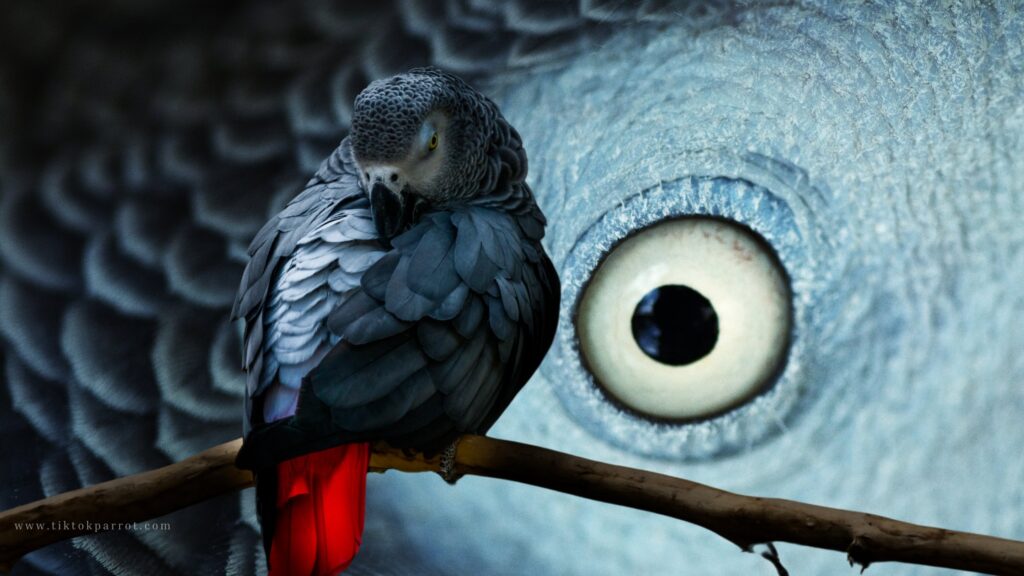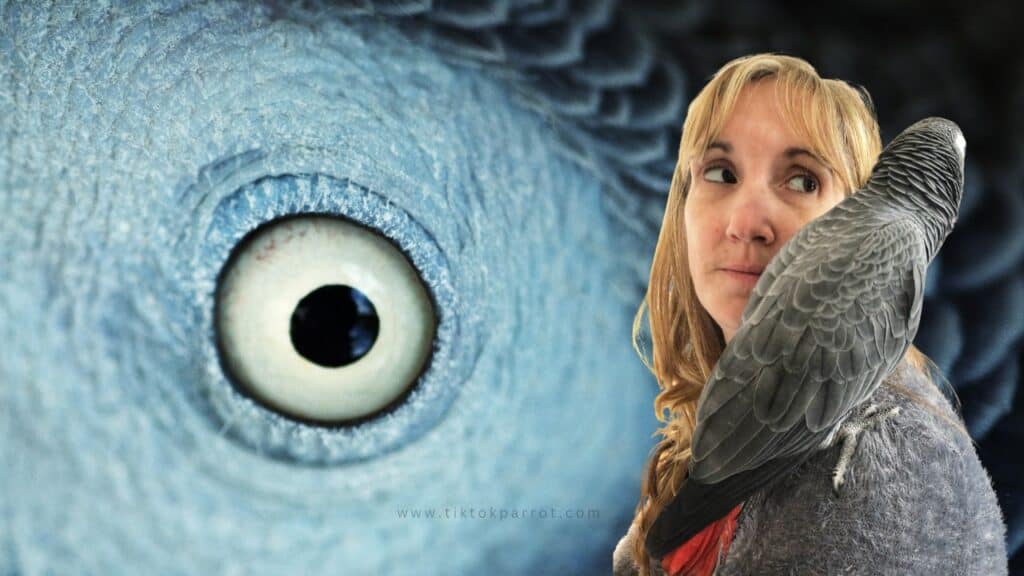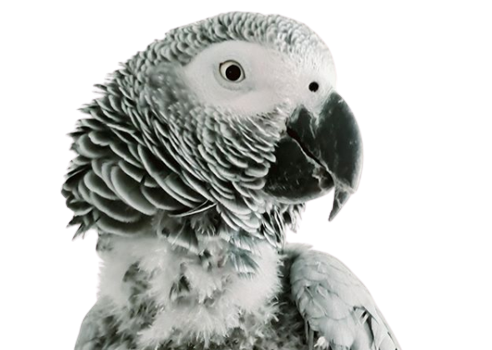African Grey parrots (Psittacus erithacus) are remarkable birds known for their intelligence, striking appearance, and ability to mimic human speech. This comprehensive overview will delve into their characteristics, habitat, behavior, care requirements, and conservation status, providing a thorough understanding of these fascinating creatures.
Discover the extraordinary African Grey parrot: intelligent, endangered, and captivating. Learn about their remarkable abilities, care needs, and conservation efforts. Explore now!
Table of Contents
Taxonomy and Physical Characteristics

African Grey parrots belong to the order Psittaciformes and the family Psittacidae. They were formally described by the Swedish naturalist Carl Linnaeus in 1758 in the tenth edition of his work, Systema Naturae
There are two main subspecies: the Congo African Grey (Psittacus erithacus erithacus) and the Timneh African Grey (Psittacus erithacus timneh)
These medium-sized parrots are characterized by their predominantly grey plumage, which has a scalloped appearance due to the white edges on their neck and chest feathers. Their most distinctive feature is their bright red tail, which contrasts beautifully with their overall grey coloration.
African Grey parrots typically measure about 33 cm (13 inches) in length from head to tail, with a wingspan ranging from 46 to 52 cm (18 to 20.5 inches). They generally weigh between 400 g (14 oz) and 407 g (14.34 oz).
Habitat and Geographical Distribution
African Grey parrots are native to the equatorial regions of Africa, inhabiting a variety of forested environments across central and western parts of the continent. Their natural range includes countries such as Angola, Cameroon, Congo, Gabon, Ivory Coast, Ghana, Kenya, and Uganda. These adaptable birds can be found in various habitats, including:
- Lowland rainforests, which provide dense canopy cover and abundant food sources
- Forest edges and clearings
- Savanna regions and mangrove forests
- Agricultural lands and plantations
- Island habitats, such as the oceanic island of Príncipe in the Gulf of Guinea 11
This broad distribution across different forest types and altered habitats demonstrates the African Grey parrot’s ecological versatility. However, their adaptability has not protected them from the threats of habitat loss and illegal trade, which have significantly impacted their wild populations.
Behavior and Cognitive Abilities

African Grey parrots are renowned for their exceptional cognitive abilities and intelligence, often compared to that of young children and even surpassing some nonhuman primates in specific tasks. Their remarkable capabilities include:
- Problem-Solving: These parrots can perform cognitive tasks at levels beyond those of 5-year-old humans, showcasing their advanced problem-solving skills 12.
- Language and Communication: African Grey parrots can acquire and use English speech in ways that resemble the communication abilities of very young children, exhibiting interactive, referential communication 13.
- Mathematical and Abstract Concepts: They have demonstrated an understanding of number concepts and other abstract ideas, including object permanence and numerical abilities.
- Vocal Mimicry: One of their most famous talents is the ability to accurately mimic human speech and other sounds, reflecting their exceptional auditory processing and memory capabilities 14.
In terms of behavior, African Grey parrots exhibit several interesting characteristics:
- Coping and Patience: They show coping behaviors, such as pacing, which can increase their likelihood of successfully waiting for a reward, indicating a level of self-control and patience.
- Social Interaction: These parrots are highly social creatures, forming strong bonds with their human caretakers and requiring significant interaction to thrive.
- Prosocial Tendencies: African Grey parrots have been observed exhibiting prosocial behaviors, which are actions intended to benefit others, paralleling social behaviors seen in primates.
Care Requirements and Diet

Keeping an African Grey parrot as a pet requires a significant commitment to their care and well-being. Here are the essential care requirements:
- Attention and Socialization: These intelligent birds need at least 5 hours of daily engagement to prevent boredom and depression 15. They form strong bonds with their owners and thrive on routine, making them unsuitable for individuals who are frequently away from home 16.
- Exercise and Enrichment: African Grey parrots require 2-3 hours of out-of-cage time daily for exercise and mental stimulation. Puzzles and interactive toys are crucial for their cognitive health 15.
- Veterinary Care: Regular check-ups with an avian veterinarian are necessary, including fecal exams, blood tests, and vaccinations 15.
The diet of an African Grey parrot should consist of:
- Pellets: High-quality pellets should make up about 75% of their diet, providing balanced nutrition 15.
- Fruits and Vegetables: Fresh produce should constitute 20-25% of their diet, focusing on dark leafy greens and a variety of colorful vegetables. Fruits should be given in moderation due to their high sugar content 15.
- Water: Fresh, clean water must be available at all times and changed daily 17.
It’s important to note that certain foods, such as avocado, chocolate, caffeine, and salty or sugary snacks, are toxic to African Grey parrots and should be avoided.
Housing Needs
Proper housing is crucial for the health and happiness of African Grey parrots:
- Cage Size: The cage should be at least 36 inches in width, depth, and height, allowing the parrot to fully extend its wings and move comfortably 17.
- Cage Material and Design: The cage should be made of durable, non-toxic materials with horizontal bars for climbing 17.
- Placement: The cage should be in a warm, draft-free area with indirect sunlight, allowing the parrot to be part of the household’s daily activities 15.
- Perches and Toys: Provide perches of varying widths and textures, along with toys that encourage foraging and problem-solving 17.
- Cleanliness: Regular cleaning of the cage, perches, and toys is essential to maintain hygiene and prevent disease 18.
Conservation Status and Threats
The African Grey parrot is currently classified as an endangered species due to significant declines in wild populations across their natural range. The population decline is estimated to be between 50% to 79% over the last three generations (approximately five decades).
Major threats to their survival include:
- Illegal Pet Trade: The high demand for African Grey parrots as pets has led to extensive illegal capture and trade. Between 1982 and 2001, over 1.3 million wild-caught African Grey parrots were recorded in international trade, with pre-trade mortality rates ranging from 30% to 66% 20.
- Belief-Based Use and Traditional Medicine: In parts of West Africa, these parrots are captured and killed for use in traditional medicine and belief-based practices 21.
- Habitat Loss: Deforestation due to illegal logging, mining, agriculture, and human settlement is a critical threat, particularly impacting their nesting sites 19.
- Poaching for Bushmeat and Rituals: African Grey parrots are hunted for bushmeat and their body parts, which are used in black magic rituals 19.
- Disease Risks: The conditions under which these parrots are captured and traded can create breeding grounds for infectious diseases, posing a threat to both the parrots and human health 21.
Conservation efforts are underway to protect African Grey parrots, including improving law enforcement to combat illegal trade, raising awareness about their plight, and promoting responsible breeding to meet market demands without impacting wild populations.
My final thoughts
In conclusion I would say, African Grey parrots are extraordinary creatures with remarkable intelligence and unique characteristics. Their endangered status highlights the urgent need for conservation efforts to ensure their survival in the wild.
As pets, they require dedicated care and attention, making them suitable only for committed owners who can provide the necessary time, resources, and stimulation these intelligent birds require.
If you liked this blog, please share it with your family and friends who might also find it helpful. If you love African Greys, join our community of Grey owners! You can meet other owners, share tips and learn from each other.
Stay safe and much love!



